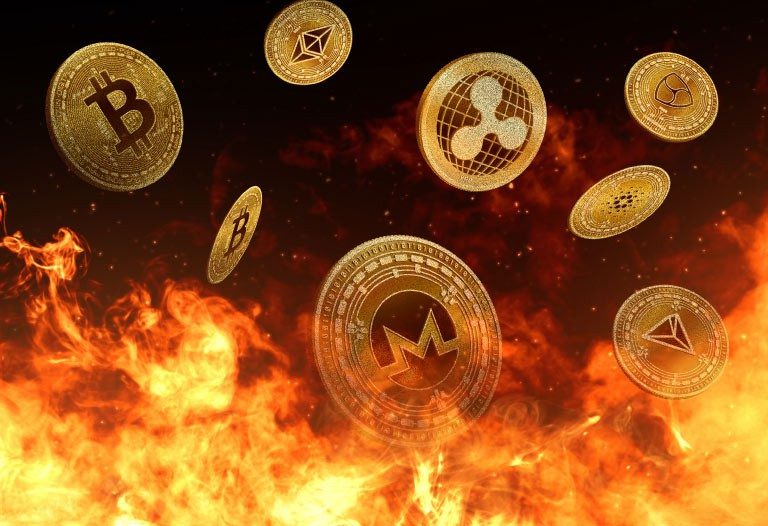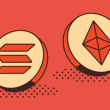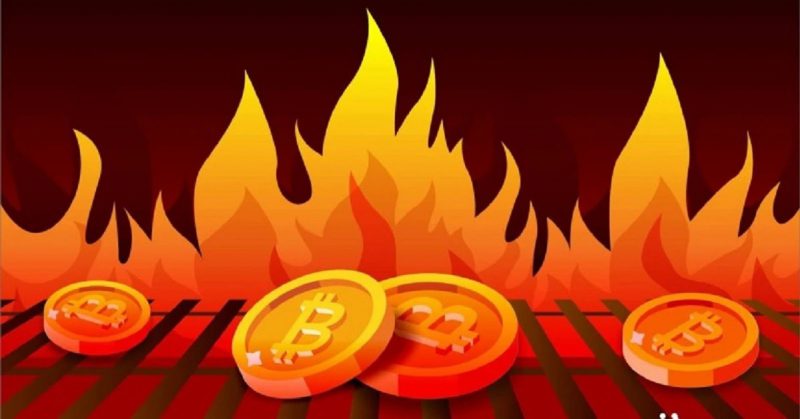Token burning is something that most members of the crypto community would have come across. Many would have even wondered what token burning even means. Cryptocurrencies are often criticized for their volatile nature. Each cryptocurrency has a different circulating supply and total supply.
The importance of supply and demand in determining value is a known factor. The high circulation of certain digital assets has often worried the community. Token burning is a popular process that has been put in place to tackle this issue. Let us see in detail what token burning is and how it works.
Also read: How to Stake BNB?


Token Burning in a Nutshell
The process of token or coin burning aims to reduce the supply of a particular coin or token. This involves sending the tokens to a dead wallet or an eater address. These addresses are designed in a way to only receive coins. Once wallets are sent to the burn address, the tokens are lost forever and removed from circulation.
The ultimate aim of burning is to remove tokens from circulation and induce scarcity. Burning can sometimes be an individual effort as well as a community effort. However, in the long run, burning is a rewarding activity for cryptocurrency in general.
Also read: How to Mine Dogecoin (DOGE)?


How Does the Coin Burning Process Work?
The burn mechanics don’t work similarly for all cryptocurrencies. The burning mechanism is ultimately aimed at increasing scarcity and boosting the value in the long term. Let us take a look at how the general burn process works:
- Choosing the token: The development team or governing body decides on the number of tokens to be burned. They also select the specific tokens for removal from circulation. This decision can be based on various factors, such as a predetermined schedule, community voting, etc.
- Burning crypto currency: After choosing the tokens, they are sent to a burner address. These wallets are designed to just receive, making the tokens gone forever once sent.
Also read: Does ChatGPT Save Data?
Not all cryptocurrencies employ a burning mechanism, and the specific reasons and methods for burning vary. Some cryptocurrencies burn tokens periodically to maintain a deflationary model. Others may burn tokens as part of tokenomics or ecosystem development strategies.
Despite the vision, the burning process helps cut down on the overall supply of a particular cryptocurrency. Coin burning is carried out for numerous reasons, including proof of burn, to increase the value, and to promote a balance.


Which Coins Employ Burning Tokens?
Numerous cryptocurrencies adopt burning mechanisms. Let us look at a few of the popular ones:
- Binance Coin (BNB): BNB does periodic burns. The exchange has committed to burning a certain amount of BNB until 50% of the supply is burned.
- Shiba Inu (SHIB): Shiba Inu, the second-largest meme coin, conducts a regular burning process. However, the burning process of the meme coin is also a community effort. The burn process is necessary for SHIB to reduce the number of coins in its 589,537,670,653,244 circulating supply.
Also read: How to Unwrap Ethereum?
Some of the other coins that employ a crypto burning mechanism include BabyDoge, TRX, etc. Even though the vision of burning is the same for all coins, the process and schedule may differ. If you are ever interested in investing in a particular coin, make sure to analyze its burning mechanism too.





